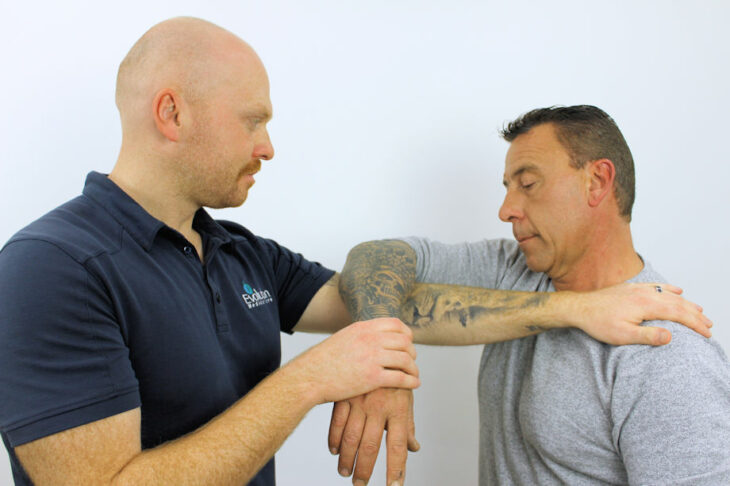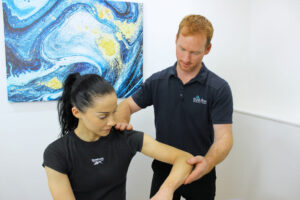Bursitis is more than just a medical term you might have heard in passing. It’s a condition that affects a significant number of people, impacting their quality of life and daily activities. Understanding what bursitis is, its causes and effective treatments is crucial for anyone experiencing the restrictions and pain that come along with bursitis. In this guide, we delve into the intricacies of bursitis, offering you science-based insights and treatments that can make a meaningful difference.
What is Bursitis?
Bursitis is an inflammatory condition affecting the bursae, which are small, fluid-filled sacs that cushion the bones, tendons and muscles near your joints. These sacs act as buffers, reducing friction and facilitating smooth movement. When inflamed, however, they can cause a range of symptoms that disrupt this harmonious interaction.
Anatomy Involved: Role of Bursae in the Body
The bursae play a pivotal role in our anatomy. They are strategically located at various points where friction is most likely to occur, such as the shoulders, elbows, hips, and knees. By providing a cushioning layer, they enable us to move freely and perform activities without discomfort or pain.
Common Areas Affected by Bursitis
While bursitis can occur in various parts of the body, it most commonly affects:
- Shoulders
- Elbows
- Hips
- Knees
- Ankles
Each of these areas has its own set of bursae, making them susceptible to inflammation under certain conditions.
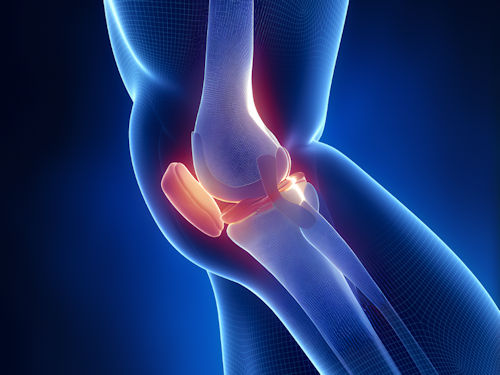
In the upcoming sections, we will explore the causes behind this inflammation, symptoms to be aware of, and how science-based treatments like Acupuncture and Remedial Massage can offer relief. We’ll also delve into the biochemistry behind these treatments, shedding light on how they interact with your Nervous System and Hormones to alleviate symptoms.
Stay tuned as we unravel the complexities of bursitis, offering you a roadmap to better health and well-being.
Causes of Bursitis
Overuse or Repetitive Motion
One of the most common triggers for bursitis is the overuse of a joint or repetitive motions. Whether it’s your job that requires you to make the same movements repeatedly or a sport that puts constant stress on specific joints, these activities can irritate the bursae and lead to inflammation.
Injury or Trauma
A direct blow to a joint can also cause bursitis. This is often seen in contact sports or accidental falls. The impact can cause the bursae to swell, triggering a cascade of biochemical reactions leading to inflammation.
Underlying Health Conditions
Certain health conditions like rheumatoid arthritis, gout, menopause or diabetes can make you more susceptible to developing bursitis. These conditions often have systemic effects that can alter your body’s natural state of Homeostasis, making your bursae more vulnerable to inflammation.
Age-Related Factors
As we age, our tissues become less flexible and more prone to injury. This includes the bursae, which may become inflamed more easily, especially if other age-related conditions like osteoarthritis are present.
Symptoms to Look Out For
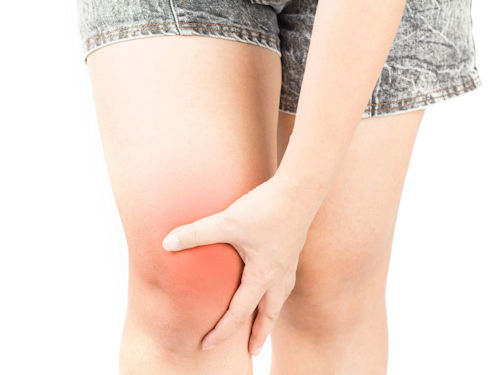
Pain
The most prominent symptom of bursitis is pain, which can range from mild to severe. It usually starts as a dull ache and can intensify during movement or when pressure is applied to the area.
Swelling
Inflammation in the bursae leads to swelling, which can limit the joint’s range of motion. This is often accompanied by an increase in local blood flow as the body tries to heal the inflamed area.
Redness
The affected area may appear red due to the inflammation and increased blood flow. This is a visual indicator that something is amiss and should not be ignored.
Limited Range of Motion
As the bursae swell, they can impede the smooth movement of joints, leading to a limited range of motion. This can make daily activities challenging and reduce your overall quality of life.
Understanding the causes and symptoms of bursitis is the first step towards effective treatment. At Evolution Medical Care, we offer a range of science-backed treatments that not only alleviate these symptoms but also address the root causes, offering you a holistic approach to well-being.
The Science Behind Bursitis
Inflammation and Its Biochemical Markers
Inflammation is the body’s natural response to injury or infection, and it plays a central role in bursitis. Biochemically, inflammation is marked by the release of various substances like Cytokines and Prostaglandins. These molecules signal the immune system to initiate a healing process. However, when this inflammation becomes chronic, it can lead to more harm than good, exacerbating the symptoms of bursitis.
Role of the Immune System
The immune system is intricately involved in the inflammatory process. When bursae are injured or irritated, immune cells rush to the site, releasing various chemicals that contribute to inflammation and blood flow. While this is a protective mechanism, it can become problematic if the immune response is disproportionate or prolonged.
Hormones Involved in Pain and Inflammation
Hormones like cortisol also play a role in modulating inflammation and pain. Elevated cortisol can suppress the immune response but can also lead to other health issues if sustained over a long period.
Aggravating Factors
Ignoring Symptoms
One of the most detrimental things you can do is ignore the symptoms of bursitis. Doing so can lead to chronic inflammation, causing more severe pain and potentially leading to joint damage. A lot of people simply think that pain will go away by itself over time. Whilst this is true, in that Bursitis will eventually go away if it’s not aggravated further, the reality is, that it takes a long time to recover once you have significant bursitis, due to the amount of time it takes to fully recover. Life happens, and you inevitably will aggravate it, because it is extremely easy to aggravate a highly inflamed bursa.
Lack of Proper Treatment
Without appropriate treatment, the condition can worsen. Over-the-counter medications may offer temporary relief but do not address the root cause of the problem, allowing the cycle of inflammation and pain to continue.
Continued Stress on Affected Area
Persisting in activities that stress the inflamed bursae can exacerbate the condition. This continued stress can lead to a vicious cycle where the nervous system becomes more sensitised to pain, releasing endorphins as a natural painkiller, but ultimately failing to resolve the underlying issue.
By understanding the science behind bursitis and the factors that can aggravate it, you’re better equipped to seek effective treatment. At Evolution Medical Care, we specialise in offering individualised, science-based treatments that go beyond symptom relief, targeting the root causes to restore your body’s natural balance.
Lifestyle Changes for Management
Making lifestyle adjustments can significantly impact the management of bursitis. These changes not only alleviate symptoms but also prevent future flare-ups. Let’s delve into some of these crucial lifestyle modifications.
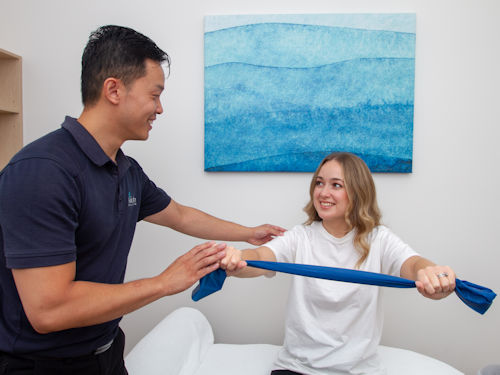
Diet
Your diet plays a pivotal role in controlling inflammation. Foods rich in omega-3 fatty acids, such as fish and flaxseeds, can help reduce inflammation. On the other hand, foods high in sugar and saturated fats can exacerbate inflammatory conditions. Incorporating anti-inflammatory foods like berries, green tea, and turmeric can also be beneficial.
Exercise—Specific Stretches and Strengthening Exercises
Regular exercise is essential, but it’s crucial to focus on the right kind of activities. Specific stretches can help improve flexibility and reduce tension in the muscles surrounding the affected joint. Strengthening exercises, on the other hand, can improve muscle tone, providing better support to the joints and reducing the stress on bursae. Always consult a healthcare professional for a tailored exercise regimen that suits your condition.
Ergonomics
The way you sit, stand, and perform daily activities can either alleviate or worsen your bursitis symptoms. Ergonomic furniture and supportive footwear can make a world of difference. Pay attention to your posture and make adjustments as needed, whether it’s the height of your chair at work or the way you lift heavy objects.
Hot/Cold Therapy
Applying ice packs or heat bags can provide temporary relief from symptoms. Cold therapy is particularly effective in reducing swelling and numbing the area, which can alleviate pain in acute situations. Heat therapy, on the other hand, can improve blood flow and relax and loosen tissues which is more commonly beneficial in longer-term bursitis. It’s essential to know when to use each type of therapy. For instance, using heat on an already inflamed area can worsen the symptoms.
By adopting these lifestyle changes, you’re not just treating bursitis symptoms; you’re also enhancing your overall well-being. These modifications interact positively with your body’s biochemistry, aiding in reducing inflammation and helping reduce stress levels in the body which is beneficial for overall health.
Science-Based Treatments at Evolution Medical Care
At Evolution Medical Care, we take a holistic approach to treating bursitis, offering a range of science-based treatments that go beyond mere symptom relief. Here’s how our specialised treatments can make a meaningful difference in your life.
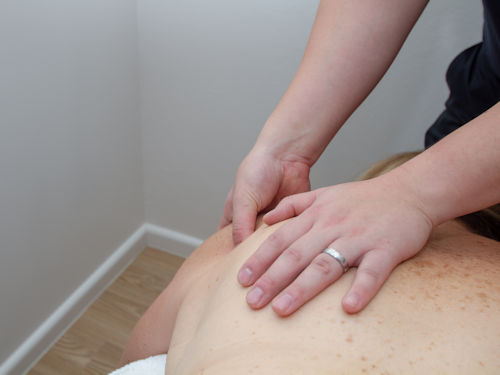
Acupuncture
Acupuncture is more than just an ancient Chinese practice; it’s a science-backed treatment that has shown effectiveness in reducing pain and inflammation. By inserting fine needles at specific points, Acupuncture stimulates the nervous system, releasing endorphins, your body’s natural painkillers. This process also improves blood flow to the affected area, aiding in quicker healing and reducing inflammation.
Remedial Massage
Remedial Massage is not just about relaxation; it’s a targeted treatment that can alleviate the symptoms of bursitis. By manipulating the soft tissues, this treatment improves blood flow and reduces muscle tension, thereby lowering the stress on inflamed bursae.
Trigger Point Therapy
Trigger Point Therapy focuses on specific points in the muscle that trigger pain and discomfort. By applying pressure to these points, the therapy aims to release the tension, improving the range of motion and reducing pain. This treatment modality can be particularly effective when the bursitis is caused or aggravated by muscle tension related to overuse.
Rehabilitation Exercises
Customised rehabilitation exercises can strengthen the muscles around the affected joint, providing better support and reducing the stress on the bursae. These exercises are designed to improve your range of motion, muscle strength, and overall joint function, contributing to long-term relief.
Why Choose Evolution Medical Care?
Our approach to treating bursitis is rooted in science and tailored to individual needs. We understand that each case is unique, and our treatments reflect that individuality. With a team of experienced professionals, we offer you not just relief but a pathway to better health and well-being.
Final Thoughts
Bursitis can be a debilitating condition, but understanding its causes, symptoms, and treatments can empower you to take control of your health. Early diagnosis and effective treatment are crucial for managing this condition successfully.
Ready to Get Started?
Don’t let bursitis hold you back. Book an appointment online or give us a call at (02) 4709 6727. We look forward to discussing how we can help in your situation.

